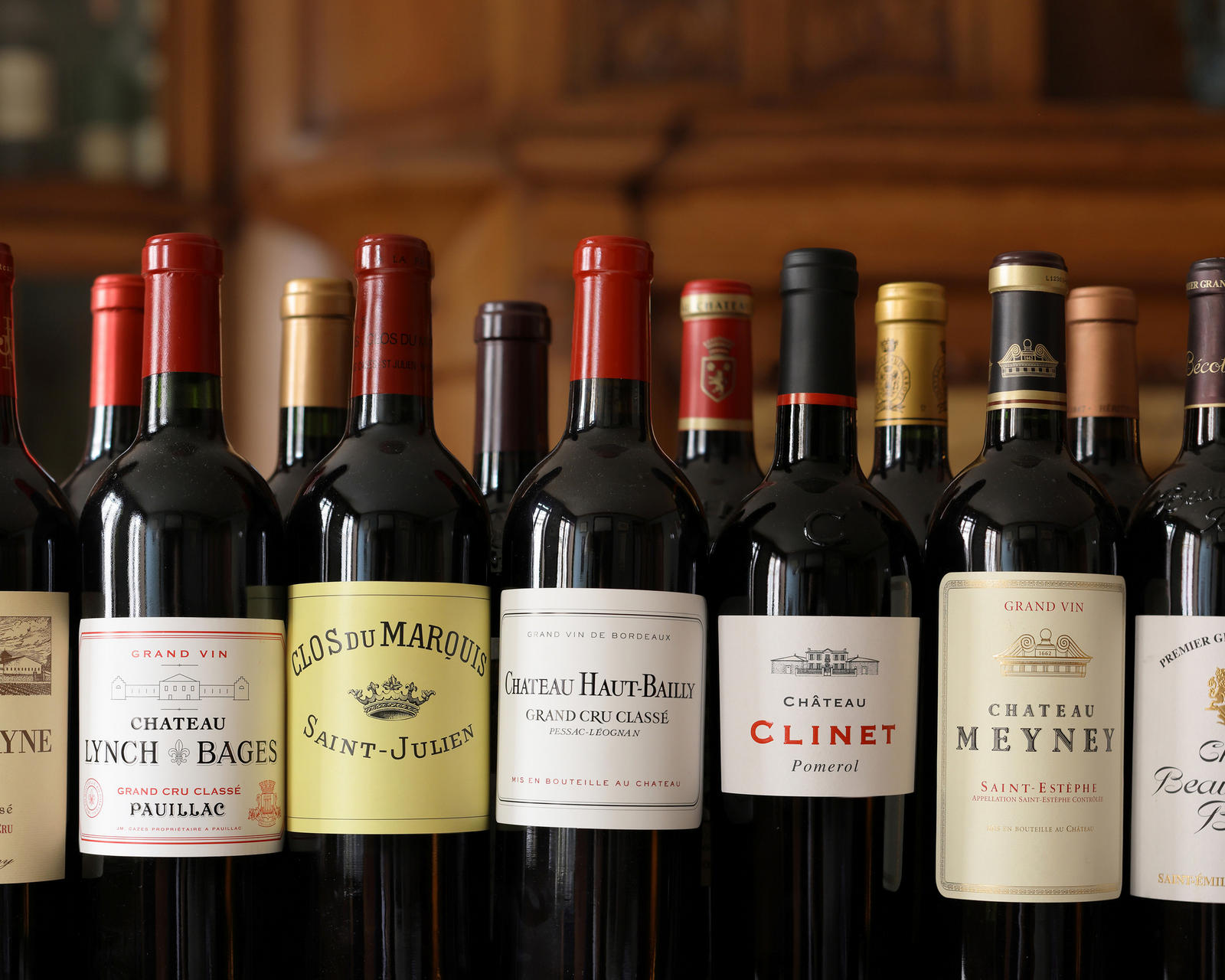Home > Editorial > Château Figeac: “a pioneer”
Château Figeac: “a pioneer”
Words: Charlie Geoghegan
Published: 5th May 2023
EIGHT-MINUTE READ
Frédéric Faye is not the first person to have dedicated his working life to Château Figeac. Here, he remembers the late Thierry Manoncourt, considers the art of the blend and the importance of knowledge-sharing
Frédéric Faye spent his first day at Château Figeac cleaning the windows. “We were waiting for the harvest, so I had nothing else to do,” he recalls. That was 21 years ago. Today, as Figeac’s general manager and winemaker, he has rather a lot to do. Frédéric has dedicated his working life so far to the estate, and he’s not the only one to have done so. The Manoncourt family acquired Figeac in 1892. Today the estate is led by Madame Marie-France Manoncourt, along with two of her daughters, Hortense Idoine Manoncourt and Blandine de Brier Manoncourt. The late Thierry Manoncourt, Marie-France’s husband, arrived here in 1947. He passed away in 2010, aged 92, having lived a full life in service to the estate, as well as to St Emilion and Bordeaux more widely. Under Thierry’s leadership, Figeac became recognised as one of Bordeaux’s most distinctive and respected estates. His efforts culminated, perhaps, last September, when Figeac was promoted to the very top tier of the St Emilion classification – a ranking he had been involved in establishing almost 70 years earlier.
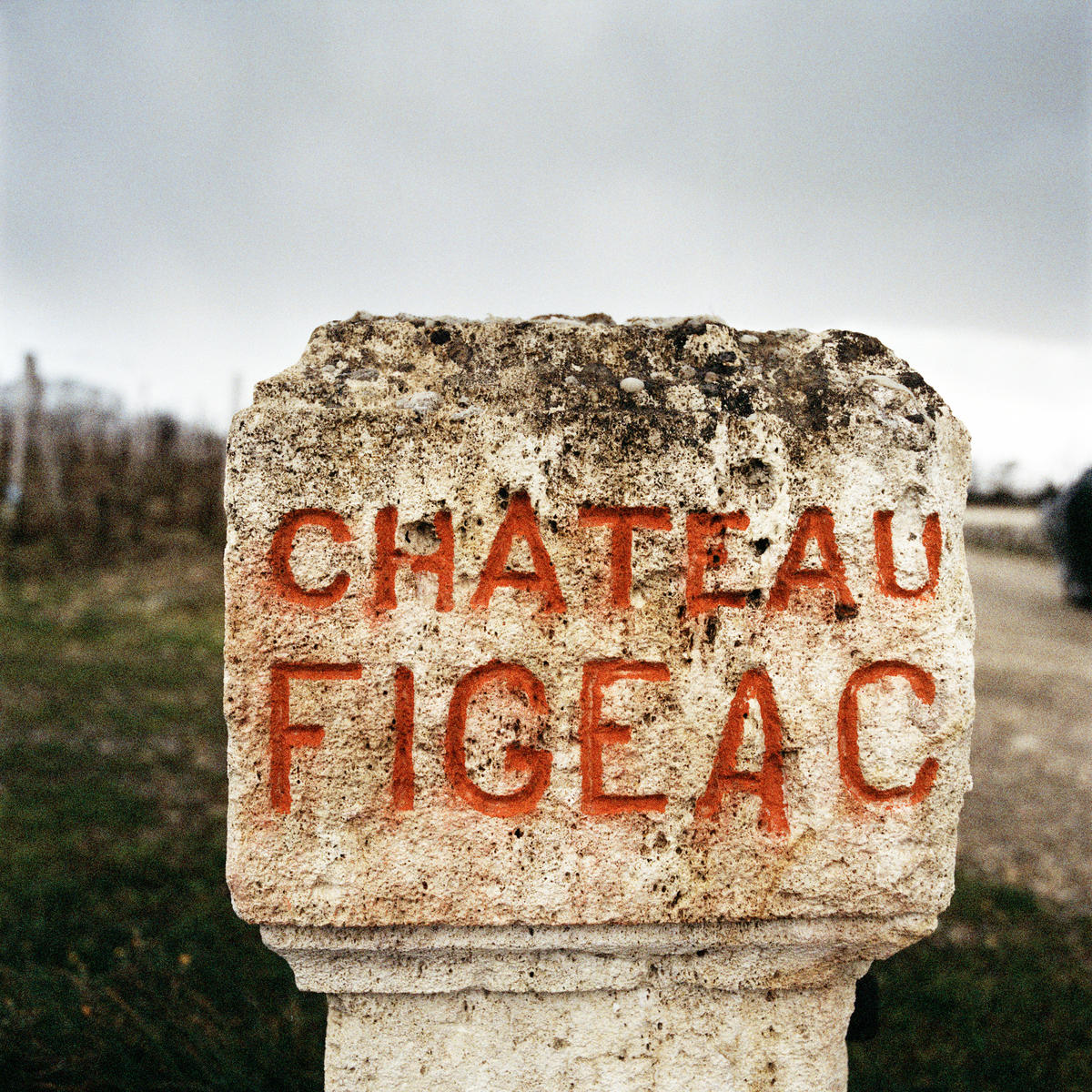
01
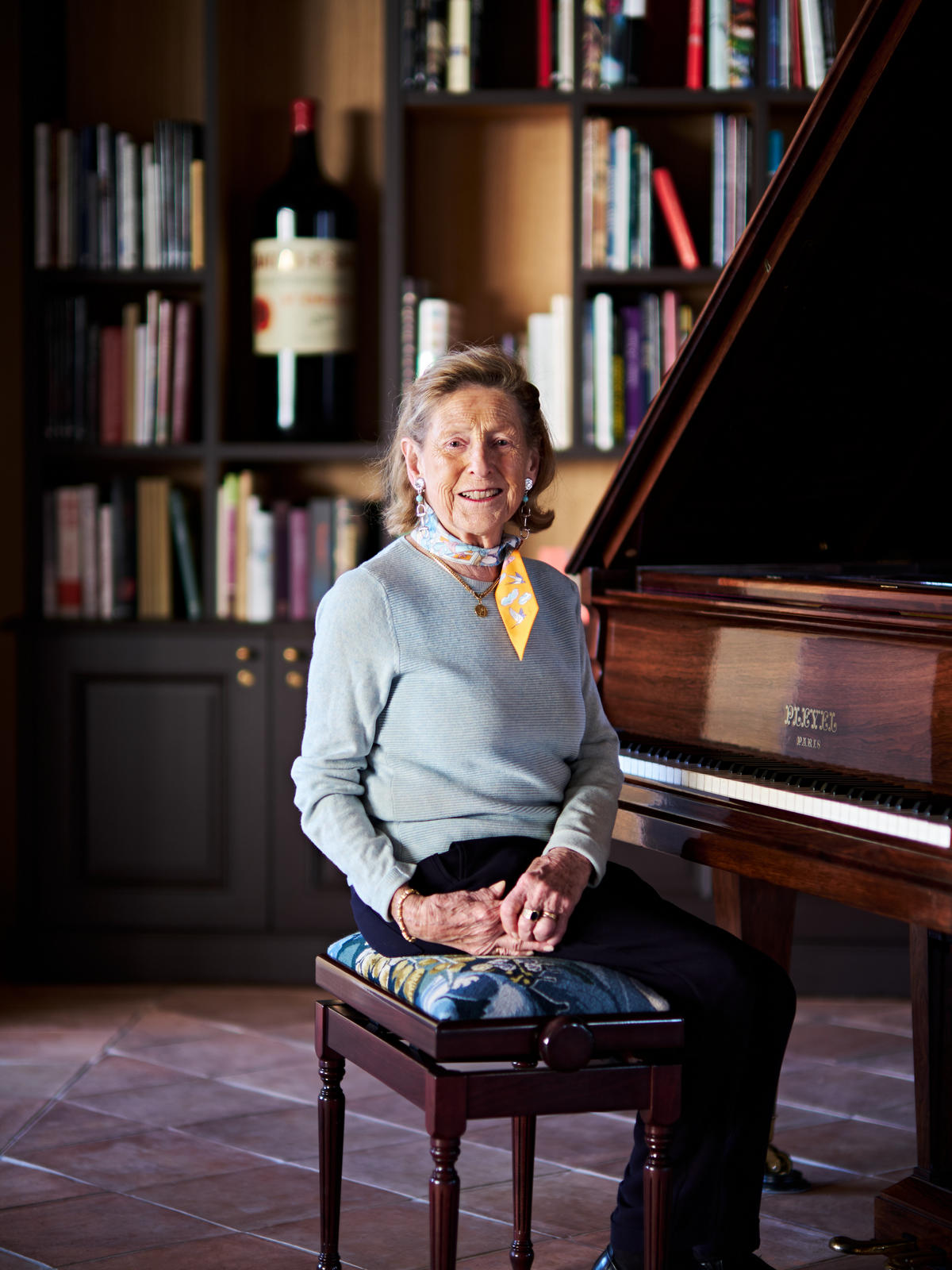
02
01: A stone marker along the road between Pomerol and St Emilion
02: Marie-France Manoncourt at home at Château Figeac; the family have been here for 130 years
Figeac sits on the border of St Emilion and Pomerol. It is next to Château Cheval Blanc, whose vineyards were once part of Figeac. In some ways, it has more in common with Pomerol than St Emilion. In other ways, it is, simply, its own thing.
Thierry immediately saw Figeac’s untapped potential, Frédéric says – “he was a pioneer”. The estate’s soils are gravel over blue clay, “unique in the region”, says Frédéric. When Bordeaux was hit by a devastating frost in 1956, Thierry took the opportunity to consider whether he had been growing the right grape varieties to suit the vineyard. He stopped working with Malbec and planted more Cabernet Sauvignon, eventually settling on a unique vineyard planting of equal parts Cabernet Sauvignon, Merlot and Cabernet Franc.
As with any fine Bordeaux, Figeac depends on balance – achieved through meticulous, masterful blending. This rings true in 2022: “The final blend is very Figeac,” Frédéric beams. Figeac’s three-grape blend is unusual, particularly in this part of Bordeaux.
Frédéric recalls his early days observing Thierry at work, appreciating just how tricky it is to achieve balance through blending these three varieties. “Merlot and Cabernet Franc love each other; it’s the Right Bank,” Frédéric says. “Merlot and Cabernet Sauvignon love each other; the Left Bank. But with Cabernet Franc and Cabernet Sauvignon, it’s very difficult.”
In some ways, Figeac has more in common with Pomerol than St Emilion. In other ways, it is, simply, its own thing
A lifetime ago, Thierry’s instincts about the vineyard were spot on, though technology has advanced considerably in recent years. Keen to understand the vineyard in an even more systematic way, the Manoncourt family tasked researchers from the University of Dijon to undertake a comprehensive terroir study in 2018. They found that Figeac had four distinct microclimates, and they learned more about the blue clay soil.
This increased knowledge has empowered Frédéric and the team to work more precisely in the vineyard and, in turn, the cellar. There is a new winery here, with twice the number of fermentation tanks, allowing for individual plots and sub-plots to be vinified separately. This approach is not unique to Figeac but is particularly beneficial when you consider the significance of blending here.
Experimentation and questioning the status quo have long been the way at Figeac. Thierry introduced a lot of new ideas and methods in his time: tractors; different pruning techniques; experiments with malolactic fermentation; stainless-steel tanks and 100% new oak, to name a few. Frédéric seems to have picked up Thierry’s curiosity. “We have a lot of questions,” he says, citing trunk disease, lack of water and climate change among today’s big issues. “What will Figeac be like in 30 years?” he wonders.
The answer, perhaps, lies in the sharing of knowledge – with Bordeaux neighbours, wineries from around the world and universities. “We have a lot of the same problems; we can find solutions together,” says Frédéric. The estate takes on a handful of interns each year; Frédéric acknowledges that knowledge flows in more than one direction. “Everyone starts as a student,” he reflects. While Thierry was perhaps Frédéric’s most obvious mentor, he was not the only one – and nor has Frédéric stopped learning. “It’s important to listen to everybody,” he says. “Students ask very interesting questions. They see things we don’t see.”
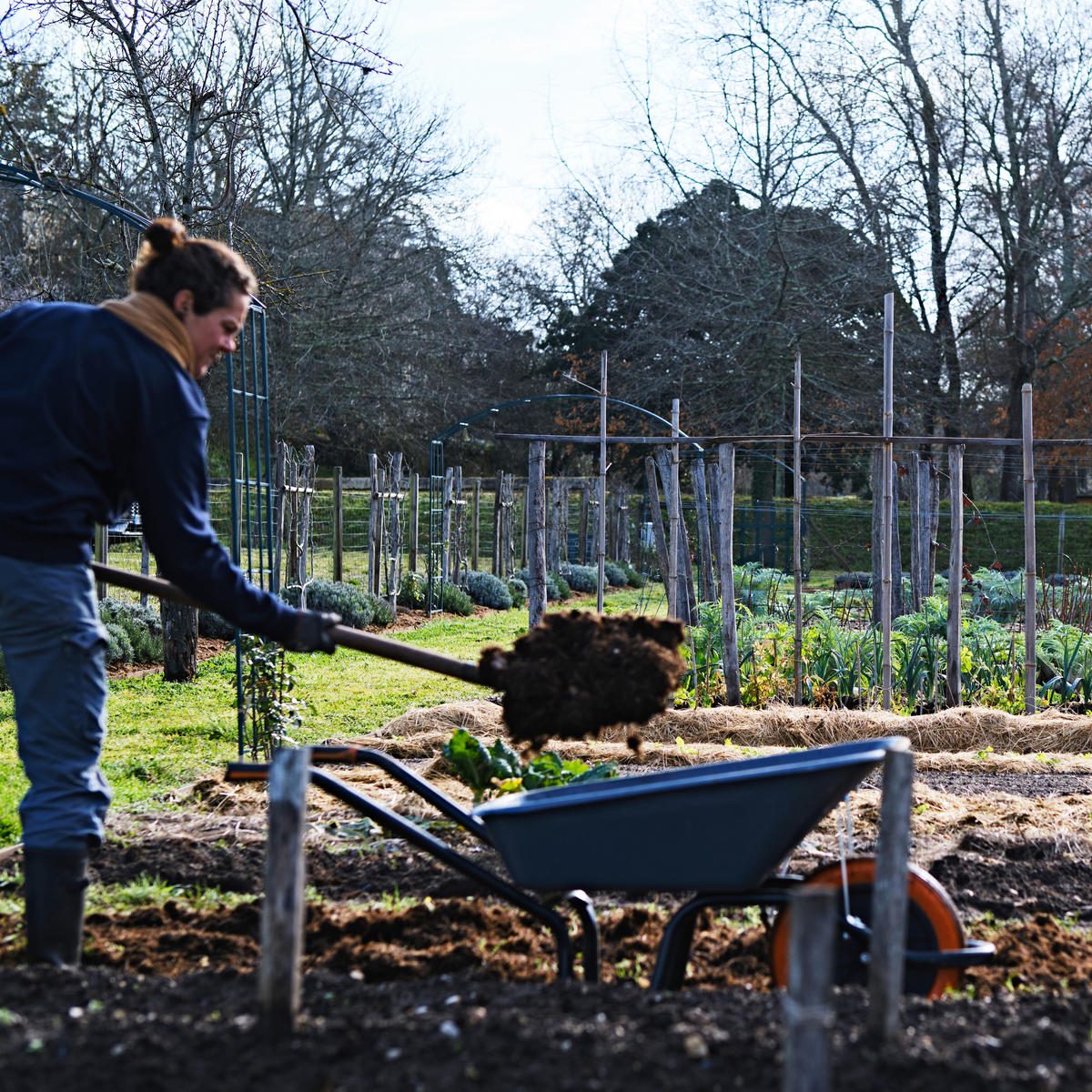
03
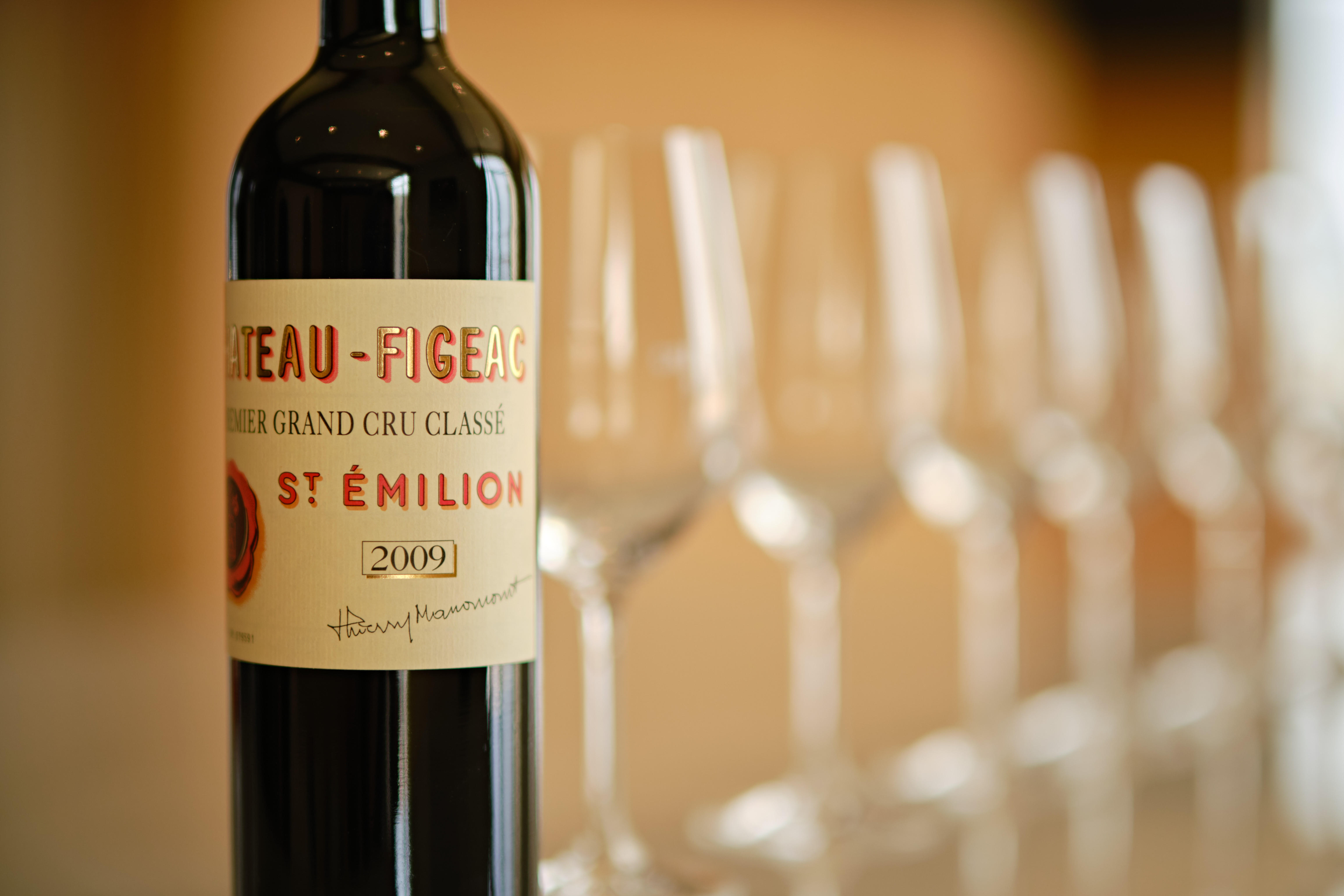
04
03: Green-thumbed gardener Sarah
is hard at work
02: The iconic label was created for the 1906 vintage by Robert Villepigue, Thierry Manoncourt’s uncle
The accumulation of savoir-faire here – be it scientific or intuitive – was a boon in the 2022 vintage. Drought and excessive heat came in late May, notably earlier than in the past. Vintages like 2019 and ’20 had taught the team how to manage similar conditions and adapt accordingly: ploughing the soils a little for humidity; very limited de-leafing and green harvesting to ensure ripe fruit without excessive concentration. There were also times that called for a more hands-off approach. With temperatures soaring, Frédéric occasionally called off the vineyard team altogether, opting to let nature take its course. “Sometimes, doing nothing is the solution,” he says.
Frédéric cut his summer holiday short, returning in mid-August to keep a close eye on developments in the vineyard. Vineyard walks at 6am were the norm until harvest started on 1st September – making this the earliest-ever vintage here. He knew from day one that it would be a good vintage, he says – though it wasn’t until after the alcoholic fermentation that he appreciated just how good it was: “What surprised me was how fresh and balanced the wine is, not representative of the summer we had.” This may be in part due to the deep understanding of the raw material here, the right grape varieties planted in the right places, managed well during the growing season and in the winery.
“Blending one plus one does not equal two. Sometimes it's zero; sometimes it's ten”
— Frédéric Faye, Château Figeac
Merlot doesn’t necessarily fare well in hot conditions, Frédéric explains. “It’s very sensitive to heat and over-ripeness,” he says. The Merlot here in 2022 was ripe but not over-ripe, with “strawberry notes, roundness and charm but also tension and the balance of acidity”. The Cabernet Franc is “one of the most outstanding we’ve ever produced,” he says, which bodes well for the wine. “Figeac is outstanding when the Cabernet Franc is outstanding,” he says, “because our Cabernet Sauvignon and Merlot are often perfect.” The heat took its toll on Cabernet Sauvignon volumes, with a smaller crop than usual, but the quality is high, and the team are well accustomed to this particular variety. Frédéric previously practised pigeage, a form of extraction sometimes called punching down, though he stopped five years ago, finding it “too aggressive” on the fruit. “We are very gentle with the Cabernet Sauvignon to maintain balance and not make it too strong,” he says.
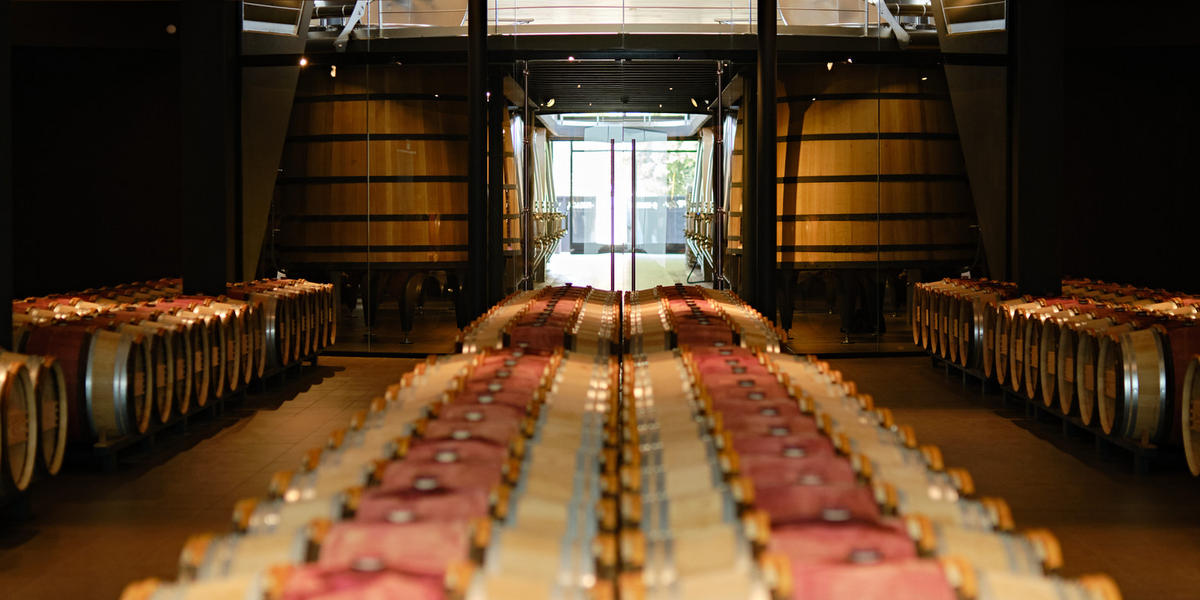
05
05: The new winery allows Frédéric and the team to work more precisely than ever before
The exact proportions in the final blend change every year, depending on the characteristics of the vintage. What worked last year may not work this year; a little bit more or less of a given variety may throw the whole thing out of balance. “Blending one plus one does not equal two,” Frédéric says. “Sometimes it’s zero; sometimes it’s 10.” The team run five different blending sessions each year. They taste and blend “blind”, without knowing the origin of individual lots. Understanding the vineyard as he does, and with more space to vinify individual parcels, Frédéric has a wide range of component parts at his disposal. “Like a painter, the more colours you have, the more precise your painting is,” he says.
The task is not so much to blend the best possible wine here, it seems, but rather to blend the best possible Figeac. Maintaining the estate’s identity is important, Frédéric believes. He takes great care to ensure he doesn’t inadvertently produce “a Pomerol with Cabernet Sauvignon”.
“Like a painter, the more colours you have, the more precise your painting is”
— Frédéric Faye, Château Figeac
It’s rare to find a château of Figeac’s stature that the owner calls home, though that’s the case here today, as it has been for some time.
Frédéric tells a story of Thierry Manoncourt, decades ago. He is at home in the château when there is an unexpected knock at the door. It’s 11.30am, very nearly lunchtime – perhaps the most important part of the day in rural France. The visitor is a young tourist, not known to the family and with no appointment. If Bordelais stereotypes are to be believed, such a visitor would be lucky to make it so far as to find himself face-to-face with the proprietor. And even if he somehow managed it, he’d be sent packing in short order. Not so at Figeac that day, Frédéric says. Thierry grabs his jacket, steps outside and proceeds to show the visitor around for three hours, lunch be damned. The visitor is eventually sent on his way, though not without a half-bottle of Figeac as a souvenir. Such moments stay with people, as they did with this particular visitor – now a lifelong collector and a friend of the estate. There are others like him, Frédéric says.
Before our own visit here draws to a close, we have a chance encounter with Madame Manoncourt, Thierry’s widow. She is having a friendly chat with some staff in the office when we happen upon the scene. She promptly invites us into Château Figeac itself, her home. It’s in impeccable condition, of course, a testament both to the architecture and to the care with which the Manoncourt family have maintained it for well over a century. But, very clearly, somebody lives here; it's a place where daily life happens. There's a grand piano, children’s toys, a tennis racket. Madame shows us around her garden, a peaceful and private refuge from the working winery and vineyard just beyond its boundaries. There are plenty of family estates in Bordeaux wine, though this one is a true family home.




